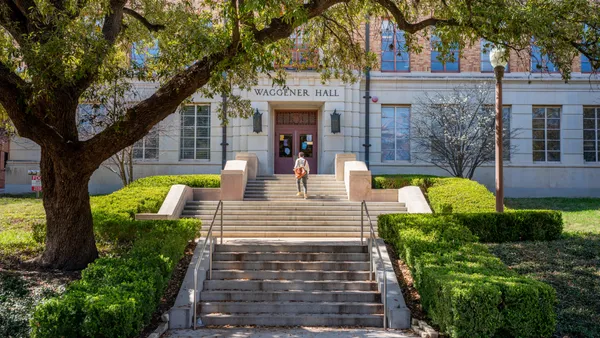Dive Brief:
- Higher education institutions have adapted to the needs of today’s students by offering online options, focusing on retention rates and allowing those with skills to demonstrate and gain credit for their competencies. Even with those changes, however, traditional institutions are not keeping up with the “talent lifecycle,” Lisa Wardell, president and CEO of for-profit Adtalem Global Education, suggested Wednesday during an ASU+GSV Summit session on the future of undergraduate education. “How do we create skills in those students to be agile learners?” she asked, adding that today’s students don’t just want meaningful employment, they want to start their own businesses.
- One model is Indianapolis-based Purdue University Global — resultant from the acquisition of Kaplan — which just last month opened for business and largely serves adults who are returning to school to complete a degree. But Betty Vandenbosch, Purdue Global chancellor, said, “We need lots and lots of models for undergrad.” Judy Olian, the incoming president of Quinnipiac University in Hamden, CT, agreed that universities need to be nimble in curriculum and think “much more holistically about preparation for work,” but she added that universities do a lot more that educate students; they also “do a lot for their communities and a lot for society.”
- That broader mission, the speakers said, raises questions about how to measure the success of a university and the success of a student who is working toward a degree but perhaps on a nontraditional pace. They also discussed different approaches to paying for higher education, including Australia’s, in which students go to college for free and begin to pay back their loans once they earn enough money, said Martin Bean, the vice-chancellor, RMIT University in Melbourne, Victoria.
Dive Insight:
Moderator J. Michael Locke, a board member at Collegis Education and the managing director of Giles Richard, an education advisory and investment firm, noted that college loan default rates are the highest among those who don’t finish their degree, which raised the issue of how to increase graduation rates. Whether their institutions are serving students right out of high school or those who have been in the job market for 20 years, the speakers agreed that colleges and universities need to put the proper support structures in place in order for students to succeed.
At Odessa College in Texas, recognized by the Aspen Institute as a model community college, President Greg Williams said focusing on student success through developmental education and helping students make the transition to the second year is now part of the college’s “money model.” While the college does offer online options, he said some students need guidance on how to learn online so that there is less of a gap in performance between those taking online courses and those attending in person. Instructors also have to learn how to better teach online, he said.
Vandenbosch noted that even though all of Purdue Global’s students learn online, faculty members bring students together weekly for a synchronized video seminar. And those who participate are more successful. “It’s hard to go to school when you’re not wealthy. There are other things going on,” she said. “But we’ve got to let them try. We cannot predict who is going to be successful.”














